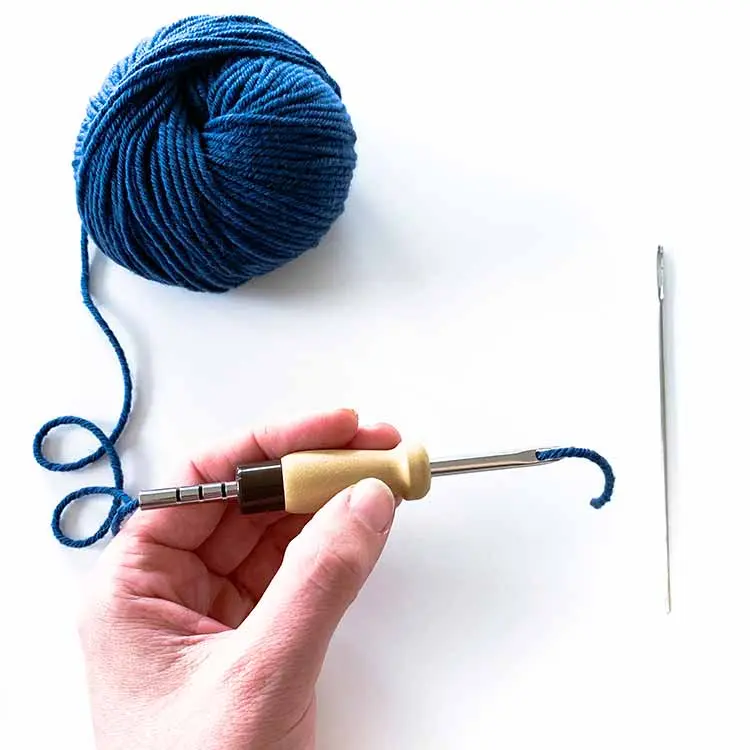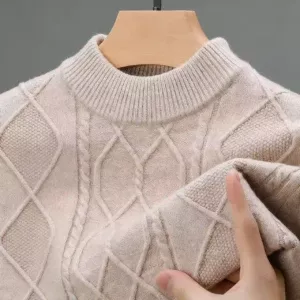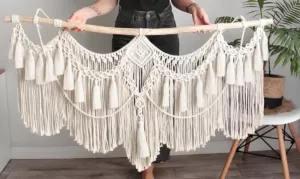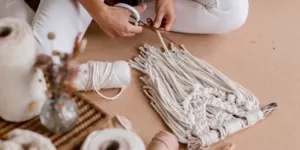Work with yarn and needles – In the realm of creative arts, few activities bring as much fulfillment and joy as working with yarn and needles. Knitting and crochet, the two primary techniques in yarn craftsmanship, offer a meditative, yet deeply engaging, experience that has captivated enthusiasts for centuries. As we delve into the world of creating fabric from yarn, we find an activity that is not only accessible but also immensely beneficial in various aspects of life.
Knitting and crochet both involve the interlocking of yarn loops to create a piece of fabric. While knitting requires two or more needles and creates a series of interconnecting loops, crochet is done with a single hook, pulling one loop through another. This fundamental difference in technique and the tools used – needles for knitting and a hook for crochet – lead to distinct textures and styles, making each craft unique in its own right.
The benefits of working with yarn and needles extend beyond the tangible outcomes of warm sweaters or cozy blankets. Engaging in yarn crafts can be a therapeutic activity, helping to reduce stress and anxiety through its repetitive motions and the focus it requires. It stimulates the mind, enhances fine motor skills, and promotes a sense of accomplishment and creativity. Additionally, the social aspect of knitting and crochet, whether through online communities or local crafting circles, fosters a sense of connection and belonging.
As we explore the intricacies of these crafts, it becomes evident that to work with yarn and needles is to partake in a tradition that is not only creatively fulfilling but also beneficial for mental and physical well-being. Whether you’re drawn to the vibrant world of yarns or the rhythmic dance of needles and hooks, the journey of mastering these crafts promises a rewarding adventure.
Basics of Working with Yarn and Needles
A. History and Differences
Origins of Knitting and Crochet
Knitting is believed to have roots in the Middle East from where it spread to Europe via trade routes, evolving over centuries into the diverse forms we see today. Crochet, however, seems to have originated a bit later and developed more as a craft of the people, its patterns and techniques passed down through generations.
Key Differences
The main difference between knitting and crochet lies in the tools and process used. Knitting is performed with two or more needles and involves creating loops that are passed from one needle to another. Crochet, on the other hand, utilizes a single hook to create stitches by pulling loops through other loops.
B. Materials
Types of Yarn
Yarn comes in various materials, such as wool, cotton, acrylic, and blended fibers, each offering different textures and suitability for projects. Yarn weight, from fine to bulky, also plays a crucial role in determining the final look and feel of the crafted item.
Needles and Hooks
- Knitting Needles: These can be straight, circular, or double-pointed, catering to different types of projects. Their size, which dictates the size of the stitches, ranges vastly to accommodate all yarn weights.
- Crochet Hooks: Hooks vary in size and are chosen based on yarn weight and specific project needs. They can also feature different materials such as metal, plastic, or wood, impacting the crafting experience.
Understanding the origins and distinct elements of knitting and crochet, alongside the vast array of materials available, provides a solid foundation for anyone looking to start their journey into the world of yarn crafts. With each stitch, crafters not only continue the legacy of these timeless techniques but also add their unique twist, creating pieces that are as individual as they are.
Getting Started with Yarn and Needles
Embarking on a journey to work with yarn and needles involves mastering some fundamental skills, understanding the language of patterns, and becoming proficient in essential techniques that will elevate your projects from simple to sophisticated. Here’s how to start.
A. Fundamental Skills
Holding Tools and Starting Off
- Knitting: Hold the needles in a way that feels comfortable, one in each hand like pencils or chopsticks, depending on what feels natural. Begin with a cast-on, which secures the yarn to the needle and creates your initial row of stitches.
- Crochet: Grip the hook in your dominant hand and stabilize the yarn with the other. Start with a slip knot and place it on your hook to form the first loop.
Basic Stitches
- Knitting: The knit stitch and purl stitch are the building blocks of knitting. Mastering these allows you to create various textures and patterns.
- Crochet: Learn the chain stitch (ch) to start your project, then move on to the single crochet (sc) for solid fabric creation. Double crochet (dc) and treble crochet (tr) can add height to your work.
B. Understanding Patterns
Reading Abbreviations and Symbols
Knitting and crochet patterns use a standardized language of abbreviations and symbols to convey the instructions compactly. Familiarize yourself with common terms like “k” for knit, “p” for purl, “sc” for single crochet, and “dc” for double crochet. Diagrams and charts also use symbols to represent stitches, making it crucial to understand these notations to follow patterns accurately.
C. Essential Techniques
Increasing and Decreasing
- Increasing adds stitches to your work, making it wider. In knitting, this can be achieved by methods like the knit front and back (kfb). In crochet, you make two stitches into the same stitch from the previous row.
- Decreasing removes stitches, tapering the work. Knitting decreases (e.g., knit two together – k2tog), and crochet decreases (e.g., single crochet two together – sc2tog) consolidate stitches.
Color Changes
To add colorwork to your projects, learn to change yarn colors efficiently. In both knitting and crochet, this usually involves drawing through a loop of the new color at the end of a stitch with the old color, securing the yarn ends to avoid unraveling.
As you work with yarn and needles, remember that practice and patience are key. Each stitch and technique you master brings you closer to creating beautiful, handcrafted items that reflect your unique style and skill.
Advanced Techniques and Project Ideas for Yarn and Needles
Once you have a grasp of the basics, advancing your skills in yarn crafts allows you to take on more complex projects and refine your work to professional quality. Here’s an overview of some advanced techniques to explore and various project ideas ranging from beginner to advanced levels.
A. Advanced Techniques
Complex Stitches and Blocking
- Complex Stitches: Beyond basic stitches, both knitting and crochet offer complex stitch patterns such as cable knits, lace patterns, and intricate colorworks like Fair Isle. These techniques require careful counts and manipulations but result in stunningly detailed work.
- Blocking: After completing your project, blocking is a crucial step to give your fabric the right finish. By soaking the completed piece and then pinning it into shape to dry, blocking evens out stitches, enhances the drape, and ensures that the dimensions are correct. This process is especially important for items like sweaters and shawls where fit and shape maintenance are crucial.
B. Project Ideas
Beginner to Advanced Projects
- Beginner Projects:
- Scarves and Dishcloths: Simple yet satisfying, these projects are great for practicing new stitches without overwhelming complexity.
- Beanies and Hats: Work these up using simple stitches and learn to work in the round. These make for quick and practical projects.
- Intermediate Projects:
- Socks and Mittens: These projects introduce techniques like ribbing and tube shapes and are perfect for exploring color changes and shaping.
- Baby Blankets: Larger than scarves, these projects allow experimentation with different stitch patterns and borders while still being manageable.
- Advanced Projects:
- Sweaters and Cardigans: These are more complex due to sizing, shaping, and often involve advanced techniques like cable knitting or lacework.
- Lace Shawls: Using fine yarns and intricate openwork, lace shawls are delicate and beautiful, representing high craftsmanship in crochet or knitting.
With each project, the way you work with yarn and needles evolves, enhancing both your skill and enjoyment of the craft. Whether you’re crafting a simple scarf or an elaborate shawl, the act of creating something with your hands is a rewarding journey. Each project not only builds your skills but also contributes to a sense of accomplishment and the joy of creation.
Community Engagement
The journey of working with yarn and needles can be deeply personal and meditative, but sharing it with like-minded enthusiasts can enhance your experience and give you access to support, inspiration, and new ideas. Engaging with the crafting community, both online and locally, is an enriching aspect of working with yarn and needles.
A. Online Platforms and Local Groups
Online Platforms
The digital age has made it easier than ever to connect with fellow crafters worldwide. Here are some popular ways to engage online:
- Crafting Forums: Websites like Ravelry and Craftster are dedicated communities where you can find patterns, advice, and lively discussions.
- Social Media: Platforms like Instagram, Pinterest, and Facebook have thriving knitting and crochet communities. You can follow hashtags, join groups, or share your own creations.
- YouTube: A great resource for tutorials, project ideas, and online classes. You can learn from others, ask questions in the comments, and even start your own channel to document your crafting journey.
- Blogs and Online Magazines: Many offer a wealth of resources including patterns, reviews, and articles about yarn crafts.
Local Groups
- Knitting Circles and Crochet Clubs: Many local yarn stores (LYS) host weekly meet-ups, which can be a wonderful way to meet other yarn enthusiasts in your area.
- Workshops and Classes: These can provide hands-on learning and are a good avenue to refine your technique and meet crafters at different skill levels.
- Advocacy: Some groups focus on crafting for charity, creating items for those in need which can add a whole new level of meaning to your work.
Conclusion
The world of yarn and needles is vast and filled with endless possibilities. Whether you start off making simple scarves or eventually create elaborate textured blankets, every stitch contributes to your growth as a crafter. Embrace each project, challenge yourself with new techniques, and don’t hesitate to seek out and contribute to the rich tapestry of the crafting community.
As you continue to explore and create with your yarn and needles, take pride in the knowledge that with every project, you’re not just making something beautiful—you’re also joining a long tradition of crafters whose work has been a cornerstone of culture and comfort throughout history. So go ahead, pick up your tools, and let your creativity flow as you stitch your way into the heart of this vibrant and supportive community.









